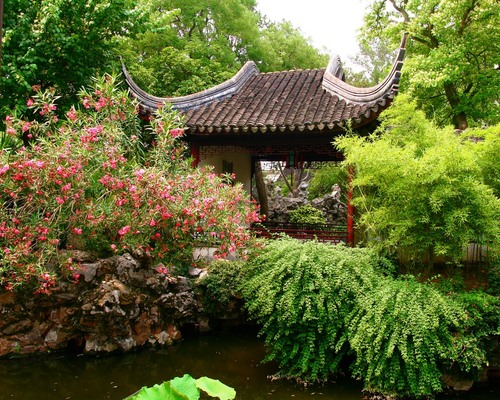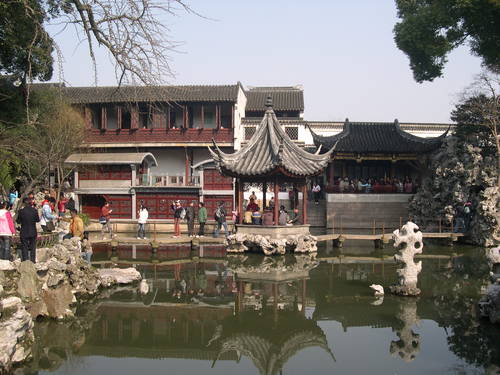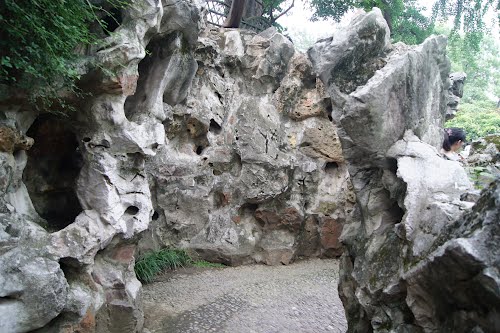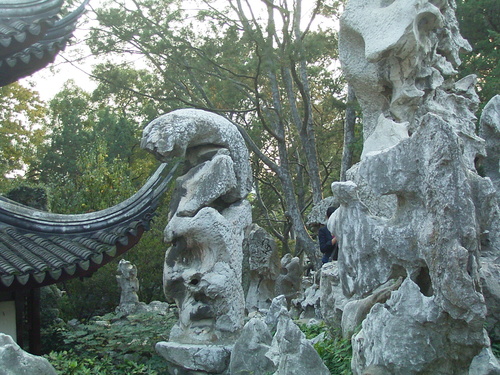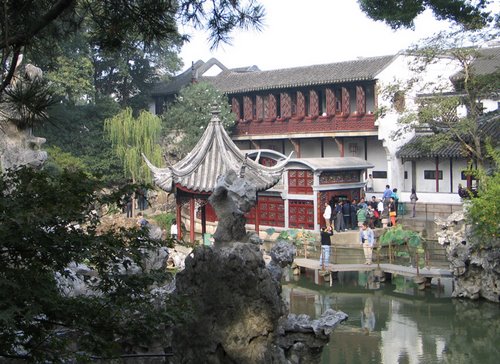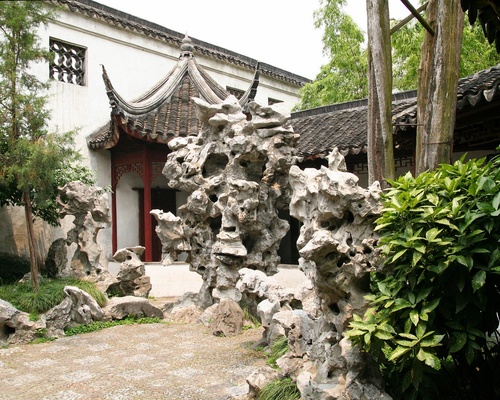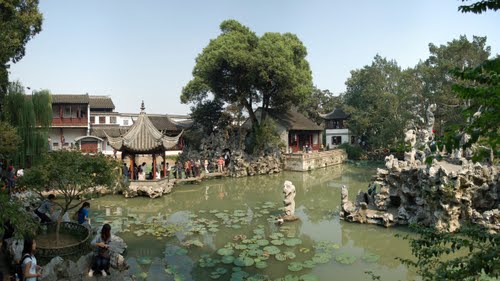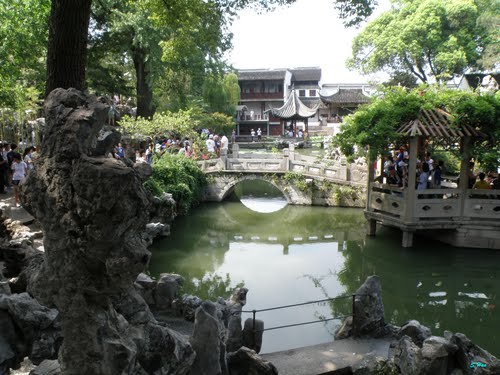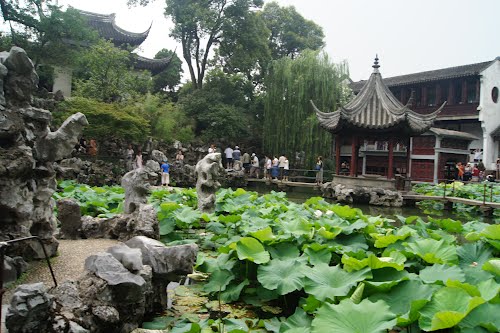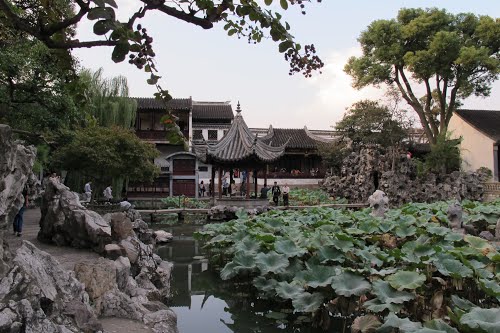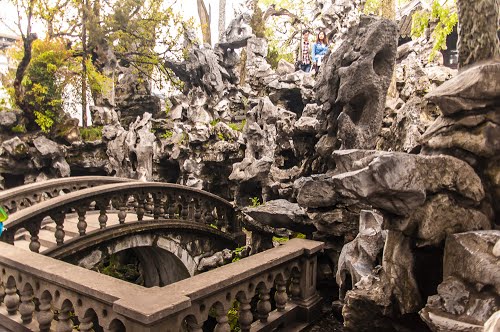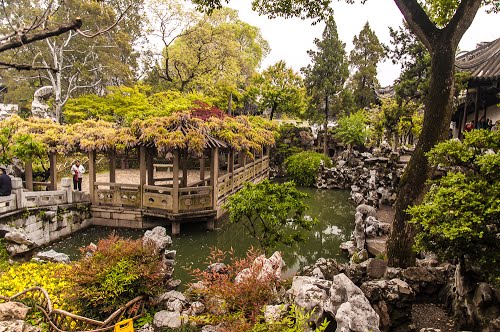The Lion Grove Garden is a garden located at 23 Yuanlin Road in Pingjiang District, Suzhou, Jiangsu, China. The garden is famous for the large and labyrinthine grotto of taihu rocks at its center. The name of the garden is derived from the shape of these rocks, which are said to resemble lions. The garden is recognized with other classical gardens in Suzhou as a UNESCO World Heritage Site.
History
"Of all the famous rock-gardens in history, only one has survived. This is the so-called 'Lion Garden' in Suzhou ." The Lion Grove Garden was built in 1342 during the Yuan Dynasty by a Zen Buddhist monk, Wen Tianru, in memory of his teacher Abbot Zhongfeng. At that time the garden was part of the Bodhi Orthodox Monastery. The name of the garden is derived from the lion-shaped taihu rocks, which in turn were built as a reference to the symbolic lion in the Lion's Roar Sutra. The name also refers to the Lion Peak of Mount Tianmu in Lin'an City, Hangzhou, Zhejiang, where Abbot Zhongfeng attained nirvana. At that time, the garden was 6,670 m² and was covered in rock and bamboo. After Wen Tianru's death, the garden fell into disrepair, but in 1589 another Buddhist monk, Mingxing, rebuilt the garden. The magistrate of Hengzhou bought the garden, and his son Huang Xi rebuilt the garden in 1771. The garden's name was then changed to the 'Garden of Five Pines'. Starting in 1850, the garden fell into disrepair once again. In 1917, Bei Runsheng purchased the garden and finished the restoration in 1926. Many buildings and rocks in the garden have been preserved since the restoration. According to official signs posted in the garden, the Bei family "donated" the garden to the Chinese government in 1949. This words on the signs seem curious because all private property was nationalized by the Communist Party in the same year. The garden was not opened to the public until 1956.
The garden's design attracted the attention of notable visitors, such as the painter Ni Zan, who created the painting Picture Scroll of Lion Grove in 1373. In 1703, the Kangxi Emperor visited the garden, and in 1765, the Qianlong Emperor also visited the garden and left a tablet True Delight personally inscribed by him as a gift. He also had a replica of the garden constructed in the Changchun garden of the Summer Palace and at the Chengde Mountain Resort.

